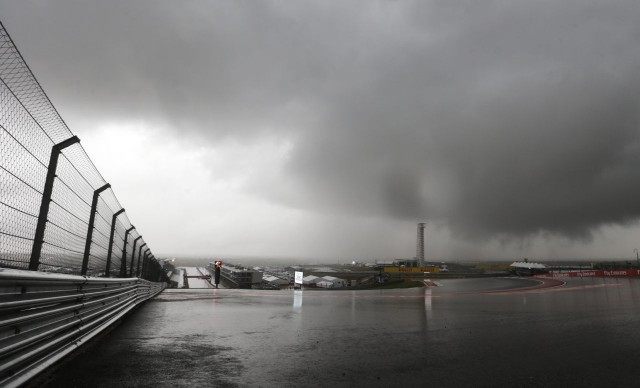California has failed to upgrade its flood control dams to prepare for the type of El Niño killing machine that cost the lives of up to eight Texans this weekend due to record thunderstorms, flooding and 50 mile-per-hour prevailing winds.
Despite the enormous risk for death and destruction from El Niño storm systems, California’s legislature has failed to prioritize investing sufficient money to maintain the state’s flood control dams and infrastructure.
The New York Times Magazine warned in 2011: “Scientists consider Sacramento–which sits at the confluence of the Sacramento and American Rivers and near the Delta–the most flood-prone city in the nation.” The article explained that many experts worry that a violent Pacific super-storm could destroy the city’s levees and spur a mega-flood that could wreak untold damage on California’s capital region.
After the Natural Resources Conservation Service (NCRS) declared about 20 percent of America’s dams “high-hazard because their deterioration could endanger the lives of people living nearby,” the stimulus of 2009 provided the Department of Agriculture $50 million to rehabilitate and extend the service life of the nation’s aging flood control dams.
According to a report by U.S. Agriculture’s Office of Inspector General, Texas was one of a number of states that prioritized its stimulus funds to rehabilitate key flood control dams. Calaveras Creek Dam on the Rio Bravo near San Antonio received $2,373,000, and Plum Creek Dam north of Houston received $2,452,000 from ARRA.
But despite having 1,400 of the 11,000 flood control dams located in California, the state chose to not prioritize any of its stimulus funds for flood control projects. Many of the California dams were constructed in areas that were initially predominantly agricultural, but urban growth and residential development has resulted in people living in much closer proximity to many dam area flood zones.
The National Oceanic and Atmospheric Administration (NOAA) had warned Texas authorities earlier this year that El Niño would generate wetter-than-normal weather and double the odds for tornadoes in the region of South-Central Texas, nicknamed Tornado Alley. NOAA added after the widespread destruction from this weekend’s storm system that Texas would “gradually feel more of El Niño’s impact” through the fall, and that the intensity should peak in the winter.
The early stages of this year’s El Niño have already caused turmoil on a global scale. Satellite recordings of upper-level wind data confirm a clear link between ocean temperature changes and slowing jet stream winds.
For much of August and September, sea surface temperatures along the equatorial Pacific ran +3 to +4 degrees Fahrenheit above normal. But Breitbart News reported on October 11 that the temperature “anomaly” in some areas in the East-Central Pacific had spiked to an all-time record high of +10.8 degrees above normal.
By the time winter arrives, many meteorologists worry that the Pacific jet stream that blows west to east will fully reverse and for the next two years carry immense amounts of super-heated sub-tropical precipitation to the Southwest and West Coast of the United States.
Normal annual rainfall in Austin, Texas is around 36 inches, but 48-inch totals have occurred during the strong El Niño years of 1935, 1981 and 1998. In the latest two-day storm, more than 16 inches of rain fell in Austin neighborhoods. Despite the city’s Bergstrom International Airport being located on high ground, all flights were suspended on Friday and 40 flights on Saturday after a half-foot of water flooded the air traffic control tower.
The normally peaceful Blanco River in the Austin suburb of Wimberley swelled to a height of 26 feet this weekend, nearly twice the official flood stage, according to the Texas National Guard. With the latest storm, Austin has suffered the wettest first half of any year in its history.
Of the ten costliest years for flooding in California since 1950, four have happened during a season when there was a strong El Niño. The worst single El Niño storm lasted from December 26 through January 3, 1997 and dumped over 20 inches of rain in some locations. Hundreds of thousands of people were forced to evacuate, and the state suffered about $1.8 billion in damages.
The second most expensive and deadliest storm system was the El Niño that slammed California with nearly continuous flooding, mudslides, and agriculture disruptions for the month of February in 1998. California’s average rainfall that month totaled 21.74 inches, breaking the all-time-record of 17.33 inches, which had stood since 1867.
For the year, California suffered 17 storm-related deaths and $550 million in damages, and a record 35 counties were declared federal disaster areas.

COMMENTS
Please let us know if you're having issues with commenting.